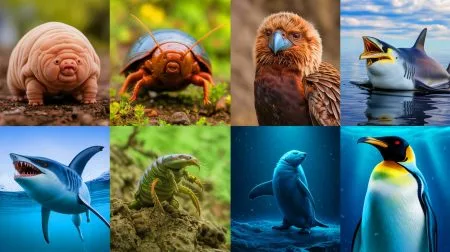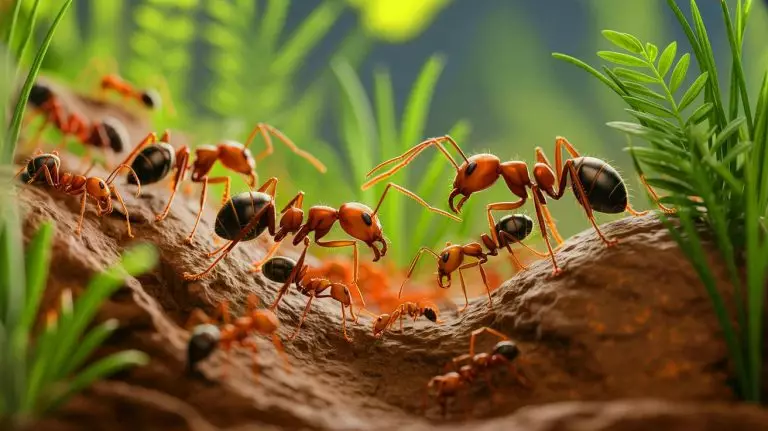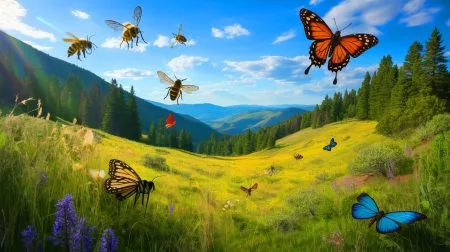| IN A NUTSHELL |
|
Ants, bees, social wasps, and termites are the most prominent examples of eusociality, the most advanced form of social organization in the animal kingdom. These insects operate within a highly efficient social structure, allowing the colony to act as a unified entity, often referred to as a superorganism. Ants, in particular, exhibit remarkable adaptability, constructing nests underground, within walls, under stones, or even inside building cavities. This adaptability enables them to thrive in diverse environments, including our homes.
Unwanted Guests at Home but Valuable to the Environment
While ants can be an annoyance when they invade our homes, it is crucial to remember their significant environmental benefits. Their presence is not a sign of filth or poor hygiene. In nature, ants perform essential functions for ecosystem balance. They aid in the decomposition of organic matter, improving soil structure by digging tunnels that enhance aeration.
Additionally, ants are active participants in biological pest control, preying on larvae and parasites. Some species even contribute to seed dispersal, promoting plant biodiversity. Despite their nuisance in domestic spaces, ants are indispensable in maintaining ecological health and stability.
Understanding the Superorganism: The Ant Colony
An ant colony functions as a superorganism, where each ant has a specific role that supports the entire colony. Workers gather food, care for offspring, and maintain the nest, while the queen’s primary role is reproduction. This division of labor ensures the colony’s success and survival.
The concept of the superorganism demonstrates the complexity of ant societies and their ability to solve problems collectively. This social structure is what allows ants to adapt to various environments and challenges, demonstrating a level of organization that rivals more complex organisms. The colony’s resilience and adaptability are key factors in its ability to thrive in different conditions.
Adapting to Domestic Environments
Ants’ extraordinary adaptability is evident in their ability to colonize human spaces. They can exploit tiny cracks and crevices in search of food and shelter. This adaptability is a testament to their evolutionary success and provides insight into how they manage to coexist with humans in urban areas.
While their presence is often unwelcome, understanding how ants adapt to domestic environments can help us manage and minimize their impact. Efforts to control ant populations should consider their ecological role and aim to balance pest management with environmental conservation.
Managing Ants with Environmental Consideration
When dealing with ants in the home, it is essential to adopt strategies that are mindful of their ecological importance. Rather than relying solely on harsh chemicals, consider integrated pest management approaches that focus on prevention and natural deterrents.
Simple measures such as sealing entry points, removing food sources, and using natural repellents can effectively manage ant populations without causing harm to the environment. By understanding the role of ants in the ecosystem, we can develop solutions that respect both our living spaces and the natural world.
Ants, with their complex social structures and adaptability, are remarkable creatures. While they may be inconvenient in our homes, their ecological contributions are invaluable. How can we better coexist with these small but mighty architects of the natural world?
Did you like it? 4.4/5 (20)







Wow, I had no idea salt could be so effective against ants! 🧂
How long does it take for the salt to eliminate the colony?
Does this method work on all types of ants or just specific species?
Myth or fact: Salt is the ultimate ant killer? 🧐
Thanks for the eco-friendly solution! 🌍
This article was super helpful. I used to rely on chemical sprays.
How much salt should I use per ant trail?
Does the type of salt matter? Like, can I use sea salt or Himalayan salt?
Interesting concept, but I prefer traditional methods.
Can salt replace all forms of pest control?
This method didn’t work for me. Any other suggestions?
Icing sugar and baking soda. They eat it and explode 👍
What if it rains? Does the salt solution still work?
Do I need to reapply the salt frequently?
Ants are so resilient! Glad to find a new way to manage them.
Is it true that salt can also deter other insects besides ants?
Does this technique work for large infestations?
How does salt actually kill the ants? Curious about the science behind it.
Thanks for saving me money on insecticides! 🙌
Thanks for this! My kitchen was overrun and now it’s ant-free! 🙏
What about sugar ants? Is the method the same?
I used salt once, and it seemed to attract more ants. 🤔
Do you have any tips for keeping ants out of the house entirely?
This is genius! I love simple solutions like this. 😄
Can I use this method in combination with other natural deterrents?
Some ants are back after a few days. Any advice?
Thank you for the natural alternative. Chemicals aren’t always the answer.
How effective is this compared to commercial ant traps?
Stick with the ant traps! I tried using the salt method last year and it didn’t work or make a difference on killing the ants . Always go with the blue round shape ant traps
I’ve heard vinegar works too. Does it pair well with salt?
Is this safe to use around food areas?
Pretty cool discovery! Who knew salt had so many uses? 🤯
Any specific brands of salt recommended for this method?
Can this method be used in gardens without harming plants?
Are there any downsides to using salt? Like, does it harm plants or soil?
Seems too good to be true… does it really work?
I tried this at home and it worked like a charm. Thanks for the tip! 😊
Can you mix the salt with anything else for better results?
Will salt attract other pests if I use it around the house?
Great read! But what about pets? Is salt safe around them?
The headline said salt was effective but it’s not actually mentioned in the article. Talk about bait and switch.
I’ve been doing this for years, and it truly is a lifesaver.
Is this method suitable for outdoor ant hills too?
You don’t say how to use, do I put around house, holes,trails?